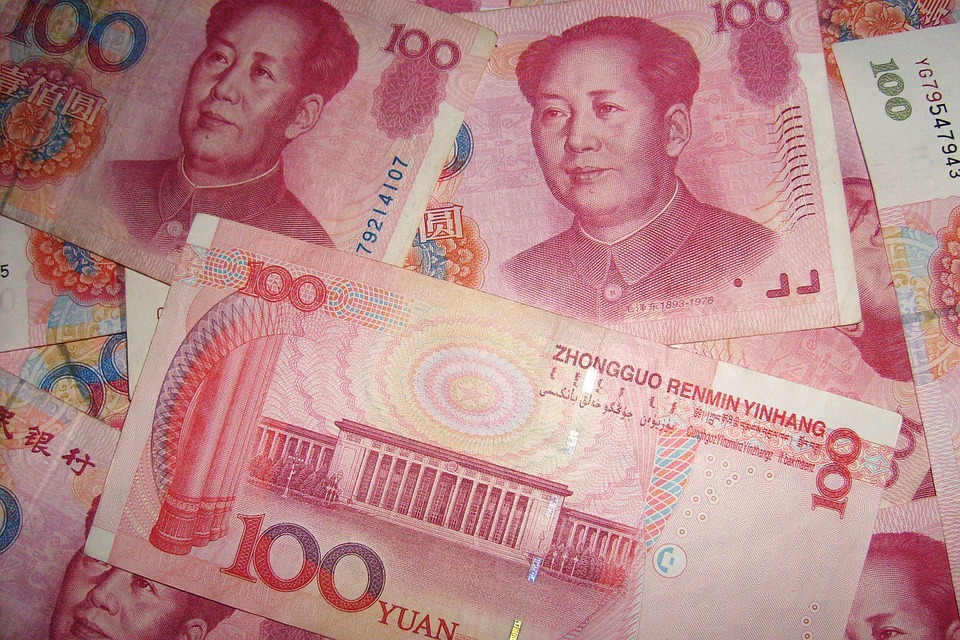By Moustafa Benberrah
Translation: Lea Sharkey
Passage au crible n° 139
 Source: Pixabay
Source: Pixabay
On Saturday, October 18th 2015, the Algerian Minister of Commerce, Bekhti Belaid, announced that his government applied for external financing from the PRC (People’s Republic of China) for “some large infrastructures projects”. His Industry and Mines counterpart Abdessalem Bouchared mentioned on the same day ongoing negotiations regarding a Sino-Algerian vehicle assembly project. Hence, the political leader called for the development of subcontracting activities in Algeria, recalling the importance of the Chinese experience in this sector. During a press conference organised with Lyu Xinhua, President of the Chinese Council for the promotion of South-south cooperation, Abdessalem Bouchareb even encouraged the Chinese firms to get involved in the steel extraction program of Gara Djebilet (Tindouf), that required massive investments and high-tech equipment.
> Historical background
> Theoretical framework
> Analysis
> References
Historical background
Let it be mentioned first some contextual events that might explain the reason why Algeria had to resort to public debt. According to figures provided by the Algerian Bank, external debt is estimated to a 3.7 billion dollars (2.27% of the GDP – Gross Domestic Product) when reserve currency amounts to 159 billion dollars. On the first hand, falling oil prices have deeply affected the Algerian economy, mainly relying on the hydrocarbon sector, which led the government to freeze many development projects. A rise of the electricity and fuel prices has then been resolved in the frame of the 2016 Budget law. Moreover, article 66 of this law plans the opening-up of public enterprise capital and the complete cession to partners after 5 years, which reactivates the privatisation process. As a justification, the Finance Minister advocates a ‘protective‘ management of the State’s resources. On the other hand, the economic slow-down of the Chinese GDP must be underlined: according to Chinese official figures published in October 2015, the growth reaches a 6.9% per year on the first trimester. Yet, it has been the lowest performance of the second world’s largest economy since the 2009 financial crisis. This appeared clearly in last September sensible decline of the industrial production. As well, retail sales, considered as a barometer of the Chinese households’ consumption, showed only a slight acceleration, and a pick-up limited to 10.9% in 2015. This economic stagnation led the People’s Republic of China to intensify its trade with some of its partners, such as Algeria. Most notably, it sought to spread its activities, currently limited to construction industry and hydraulic systems, namely by diversifying into mechanical and electronically industry, steel industry and mines.
Theoretical framework
1. The monetisation of an emerging economy. More and more, sovereign functions of the State are handed down to intermediates, coupled with a division of prerogatives: on the one hand, transformation of production and transport systems, and on the other hand, monetisation and financialisation of the economy. In this regard, the conditions of the capital holder prevail, hence ensuring its domination.
2. A win-win partnership. Facing the collapse of the financial bubble, China is looking to maintain its economic growth. Such a relationship relies on postcolonial specialisation, established between suppliers of raw materials and producers of manufactured products and services. This system foreshadows a Chinese redeployment in Africa and Asia, characterised by straddling techniques, brushing aside every distinction between public and private, State and market, networks of influence and economic accumulation.
Analysis
It should be highlighted that emerging countries, such as China, have been strongly impacted by the third phase of the 2007 world financial crisis. This stage, concomitant to the collapse of raw material prices, follows the burst of the American real estate bubble in 2008 and its consequences on the European debt in 2011. According to Goldman Sachs consultancy,”the growing uncertainties relative to the after-effects of the decline in emerging economies, collapse of raw material prices and rise of American interest rates have raised concerns regarding the durability of the increase of asset prices, marking thus a new phase of the global financial crisis“.
In order to cope with this issue, the People’s Republic of China seeks to deepen its business partnerships, in order to meet the imperatives of global competition. This is the reason behind a policy of economic transnationalisation, as a balance between national policies and international demands. As an example, the AIIB Asian Infrastructure Investment Bank has been established on June 29th, 2015, requiring an 800 billion dollar investment per year. This initiative embodies the Chinese ambition to come up with an interesting alternative for lenders such as the Global Bank or African Development Bank. Such initiative is in line with the three PRC main interests: 1) strengthen its diplomatic position. 2) Wisely invest its reserve currency in order to reinforce the Yuan. 3) Provide its construction and hydraulic industry groups with transnational growth connections.This policy is in line with the process of the new silk road, a Chinese fund estimated to 40 billion dollars, and the BRICS bank (Brazil, Russia, China and South Africa). Yet, if these intermediaries hold a structural power that strengthens their political influence and legitimacy, Philip Cerny notes however that the Competition State holds its position and domination through public-private partnerships. In the light of this, the Chinese government doubles its aid programs in writing-off debts or providing low-rate loans likely to attract developing states. In this regard, the privileged relationships that PCR and Algeria have had since 1958, and the fact that one is the first supplier of the other when it comes to external trade – are greatly facilitating this type of cooperation.
In order to account for its use of long-term debt, the Algerian government brings forward large infrastructure projects that have been mainly attributed to Chinese firms, employing more than 40000 workers on the national territory. Moreover, the authorities have been stating that this should strengthen production, while ensuring new income pivotal to debt repayment, and a surplus bound to cover the loss-making sectors. It should be underlined also that an ADB report (African Development Bank), published in 2012, shows that Algeria has granted between 2002 and 2012, 20 billion dollars worth of contracts to Chinese companies, without a clear increase showing on national employment rates. Consequently, Chinese companies such as CSCEC (China State Construction Engineering Corp) clearly appear as the main recipients and beneficiaries of this public aid initially bound to the Algerian economy. Collaborating with major banks in their country of origin, these companies have a prominence even out of their national territory and a key position when tendering to public procurement due to competitive costs and a good knowledge of local politics and economics. However, the Algerian economy may not rely on such good prospects, and suffers, on the contrary, a loss of independence.
Cabestan Jean-Pierre, Le Système politique chinois. Vers un nouvel équilibre autoritaire, Paris, Presses de Sciences Po, 2014.
Cerny Philip G., Rethinking World Politics: A Theory of Transnational Pluralism, New York, Oxford University Press, 2010.
Chiu Justin, « Une banque multilatérale entre coopération et prédation. La signature des statuts de la BAII », consulted on November 12, 2015 on Chaos International.
El Watan consulted on November 15, 2015 at www.el-watan.com
Hibou Béatrice, « Retrait ou redéploiement de l’État », Critique internationale, (1), aut 1998, pp. 151-168.
Hugon Philippe, « La Chine en Afrique. Néocolonialisme ou opportunité pour le développement ? », Revue internationale et stratégique, (72), 2008, pp. 219-230.
Strange Susan, The Retreat of the State. The Diffusion of Power in the World Economy, Cambridge, Cambridge University Press, 1996.




